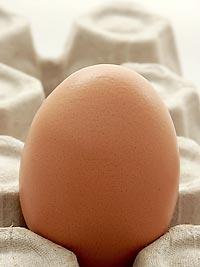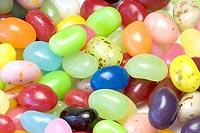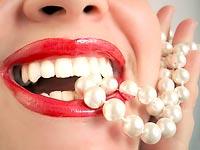When picking paint, separate the eggshell from the satin

Be Jane is a new monthly home-improvement feature in digs. It's adapted from www.BeJane.com, the online community created by Heidi Baker and Eden Jarrin for women who enjoy do-it-yourself projects.
Once you choose a paint color for your home, you have one more decision to make: the paint sheen.
From satin to eggshell to flat finishes — what's it all mean, anyway?
A paint sheen (or "paint finish") refers to the degree of gloss or sheen in a paint once it's dry. Now you might know the difference between a flat and a high-gloss sheen, but it's those sheens in between — and when and how to use them — that can get confusing.
So here's a little primer on the key factors that should go into choosing a paint finish.
Hint: Cut out this page and stick it on your fridge so you're never confused again.
Flat
Appearance: This sheen has a matte appearance. There is no sheen or light-reflective qualities.
Uses: Flat paints are great for areas with dents, dings and rough surface texture. They're great for covering up obvious imperfections on walls that don't have a lot of contact with hands.
Durability: If you have children or pets, this paint sheen probably isn't the best choice, as it tends to show dirt easily and is not easy to keep clean.
Eggshell
Appearance: Eggshell paints reflect more than flat paints but only slightly. The reflective qualities of this sheen are similar to that of a real eggshell.
Uses: This sheen is a bit smoother than flat, meaning it reflects more light and is smoother to the touch. It's a great choice for use on walls.
Durability: More durable and washable than most flat paints, but not as durable as satin or semi-gloss.
Satin
Appearance: Satin sheen paints are not truly "shiny," but more like actual satin, having subtle reflective qualities. Some refer to a satin sheen as having a "silky finish." It adds just enough light to the walls to exhibit a slight glow.
Uses: Satin sheens are typically used for kitchens, bathrooms, hallways, kids' rooms and even some woodwork and trim.
Durability: Satin sheens are durable enough to stand up to most dirt and cleaning, and are great for high-traffic or food preparation areas.
Semi-gloss
Appearance: A semi-gloss paint reflects 35 to 50 percent of the light that hits it. This means it will have a much shinier appearance.
Uses: Many people find semi-gloss paint to be too shiny for walls though it works quite well on surfaces that get a lot of handprints, such as trim, cabinets, moldings and doors.
Durability: Semi-gloss paints tend to be much more durable, mostly because they can be easily cleaned and resist dirt and stains.
High-gloss
Appearance: High-gloss paint reflects about 75 to 80 percent of the light that hits it.
Uses: High-gloss should be limited to areas that need to be easily washable and durable. For example, you wouldn't typically paint a wall with a high-gloss paint because the reflective qualities create too much glare. High-gloss also tends to show surface imperfections.
Durability: While the high sheen allows for an easy surface to clean, any dents or dings in the paint will be visible, so take extra precautions in choosing where you use it.
Note: If you're painting over older high-gloss paint, take extra time to properly prepare the surface by de-glossing or sanding away as much of the sheen as possible — or the new paint will peel.



